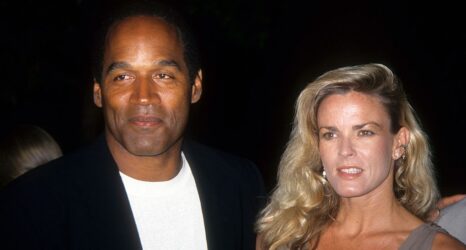It wasn’t enough that Geena Davis became an Academy Award-winning actress beloved by many. So she took up archery and became a semi-finalist in the Olympics. That wasn’t enough either, so then, inspired by her daughter, she launched her own institute in 2004 to close the gender gap in media representations. This week, the Geena Davis Institute on Gender in Media hosted its third symposium and presented its latest study on the roles and occupations women and girls fill in media. In conjunction with Stacy Smith, an associate professor at USC’s Annenberg School of Communication and Journalism, the new research analyzes how the entertainment industry can diversify gender portrayals in popular television and film.
Before the symposium, Ms. sat down with actor/activist Davis to discuss the lack of advancement in female representation and the part feminism plays in altering how girls and women are characterized.
Ms. Blog: In the past two decades, has there been any improvement in how women are portrayed in media?
Geena Davis: No, there hasn’t been. Our research actually covers the past two decades, and what we found is that the ratio of male to female characters did not improve over the 20 years we studied. Well, actually, it improved by 0.7 percent. So that’s something. It means we should achieve parity in about only 700 years. Nor has the hypersexualized portrayals of the female characters improved in any way over that period.
However, we are going to talk at the symposium about a little survey we did of all the people who have seen our presentation over the past several years, and the numbers are pretty interesting. We wanted to find out what impact the Institute is having and whether people have started to change things that we will actually be able to measure in a couple of years. Out of the people surveyed, the majority of them said they had utilized what they learned from our presentations and through the Institute. Almost all of them did it through three or more projects[that involved film or television]. About 25 percent had done it in four or more projects. So that’s very exciting. We noticed the older the respondent, the more likely they were to have used knowledge of this research. We asked them what they specifically changed about their project, and over a quarter said they changed the aspirations or the occupations of the female characters, which is something we really want to focus on.
What are some of the most compelling findings in the new study your institute has released?
We had a big study come out about the occupations of female characters in movies and on TV. Eighteen percent [of industry professionals and content creators surveyed] had changed the story development [to include females] and 16 percent had increased female characters as secondary characters. You just have to look at the characters in the script. Were any of them switched to female without having to really change much? Eleven percent had changed male characters to female characters, which is an easy way of addressing that. Based on that survey and a lot of anecdotal evidence that didn’t make it in here, we really feel that when we update our research again in 2015, we will have been able to measure the needle having moved for the first time. The ratio of male to female characters has been the same since 1946. If that needle moves, it will be a big deal.
What role does feminism play in closing the gender gap in media representations?
It’s all about feminism. Feminism simply means equal social and political status for men and women. There’s nothing radical about it or about using that word or having that as a goal. We’re simply trying to elevate the status of the female characters to equal. We take up half the space in the world so it would be great to see roughly half of characters be female.
How have your personal experiences driven you to change gender stereotypes in media?
Twenty-one years ago, I had the good fortune to be cast in Thelma and Louise, and that was a really eye-opening experience. The reaction to the film was so overwhelming. It really struck a nerve with people. Of course, there were plenty of people who were against it and were like “Oh my god, everything is ruined. The women have guns now. It’s all going to go to hell now,” but that experience really made me realize how few opportunities women have to feel like that about the female characters. It was so rare for women to come out of a movie all pumped up and jazzed and like they really identified with the female character.
Then the very next movie I did was A League of Their Own, which elicited some of the same responses, especially with girls and teens. I had a very big lesson early on about how powerful media images can be and how important it is to see women doing powerful and interesting things. So when I had a daughter 10 years ago, and when she was a toddler, I watched G-rated movies with her. I noticed this huge gender disparity, which most people seem to be really unaware of. We’re feeding kids this image of society where boys vastly outnumber girls in what they see from the very beginning, which really doesn’t make any sense to me.
Does social media pose a new frontier and a site of change for the representation of women and girls?
I’m very optimistic about social media. It democratizes things, so there’s nothing to prevent women from expressing themselves and making themselves heard. Change can just happen so fast these days with the way technology moves. As long as we can keep women and girls up with the technology and make sure they’re interested in tech fields, I think we’ll be doing good.
Credit: Geena Davis Institute on Gender in Media and ITVS, photo by Erica Mueller.





